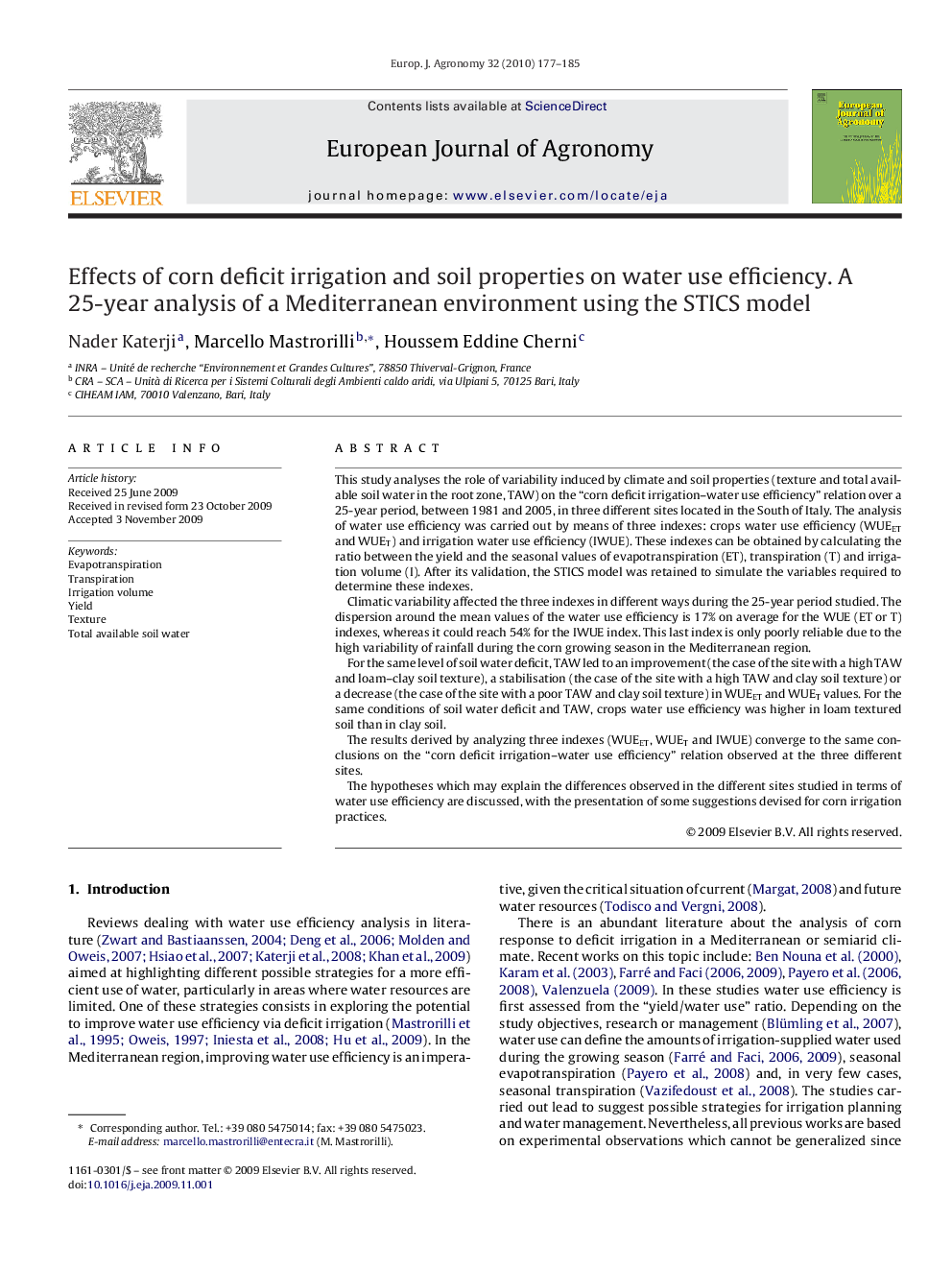| Article ID | Journal | Published Year | Pages | File Type |
|---|---|---|---|---|
| 4509418 | European Journal of Agronomy | 2010 | 9 Pages |
This study analyses the role of variability induced by climate and soil properties (texture and total available soil water in the root zone, TAW) on the “corn deficit irrigation–water use efficiency” relation over a 25-year period, between 1981 and 2005, in three different sites located in the South of Italy. The analysis of water use efficiency was carried out by means of three indexes: crops water use efficiency (WUEET and WUET) and irrigation water use efficiency (IWUE). These indexes can be obtained by calculating the ratio between the yield and the seasonal values of evapotranspiration (ET), transpiration (T) and irrigation volume (I). After its validation, the STICS model was retained to simulate the variables required to determine these indexes.Climatic variability affected the three indexes in different ways during the 25-year period studied. The dispersion around the mean values of the water use efficiency is 17% on average for the WUE (ET or T) indexes, whereas it could reach 54% for the IWUE index. This last index is only poorly reliable due to the high variability of rainfall during the corn growing season in the Mediterranean region.For the same level of soil water deficit, TAW led to an improvement (the case of the site with a high TAW and loam–clay soil texture), a stabilisation (the case of the site with a high TAW and clay soil texture) or a decrease (the case of the site with a poor TAW and clay soil texture) in WUEET and WUET values. For the same conditions of soil water deficit and TAW, crops water use efficiency was higher in loam textured soil than in clay soil.The results derived by analyzing three indexes (WUEET, WUET and IWUE) converge to the same conclusions on the “corn deficit irrigation–water use efficiency” relation observed at the three different sites.The hypotheses which may explain the differences observed in the different sites studied in terms of water use efficiency are discussed, with the presentation of some suggestions devised for corn irrigation practices.
